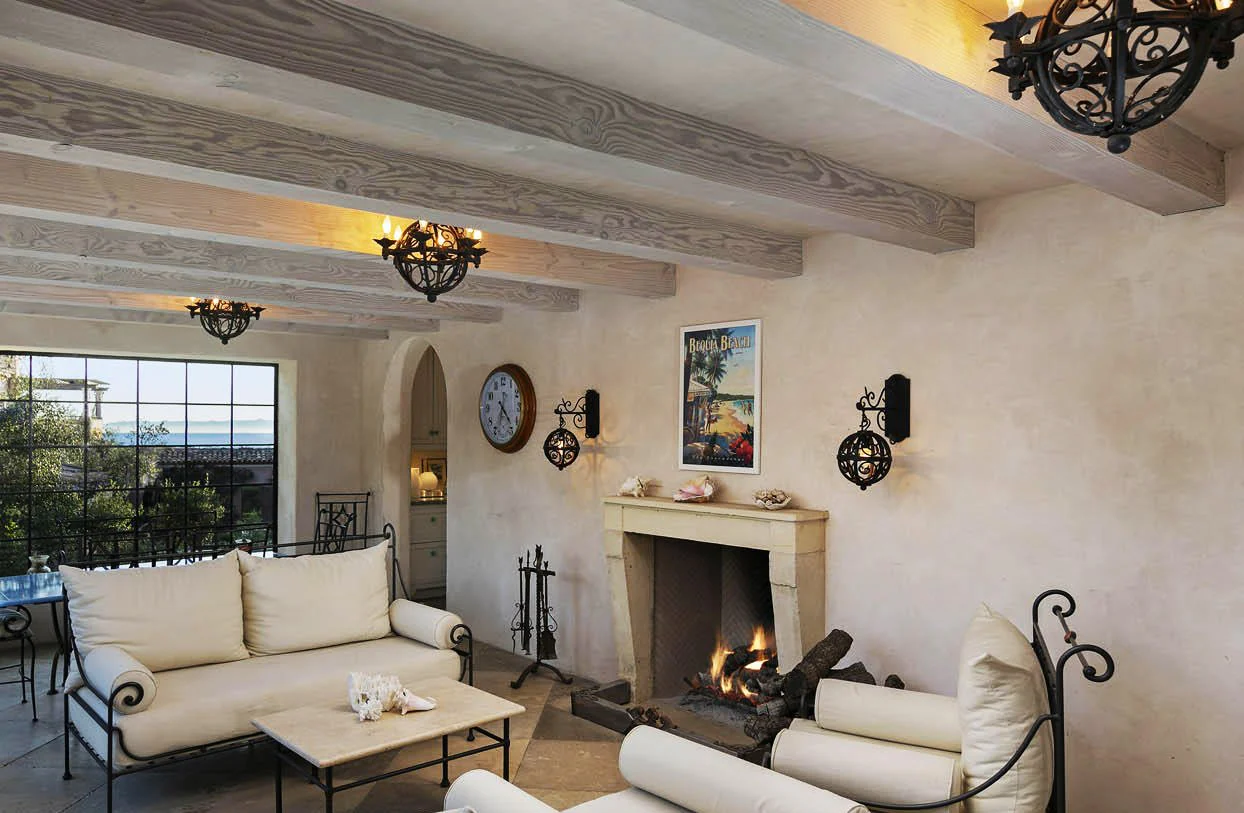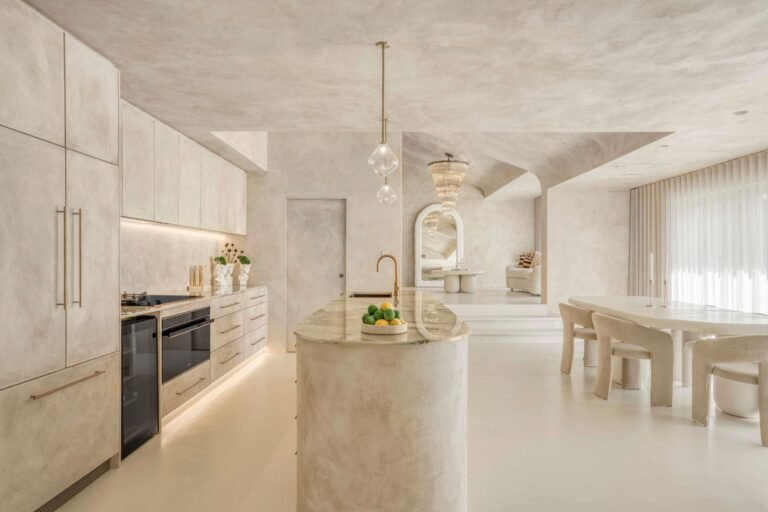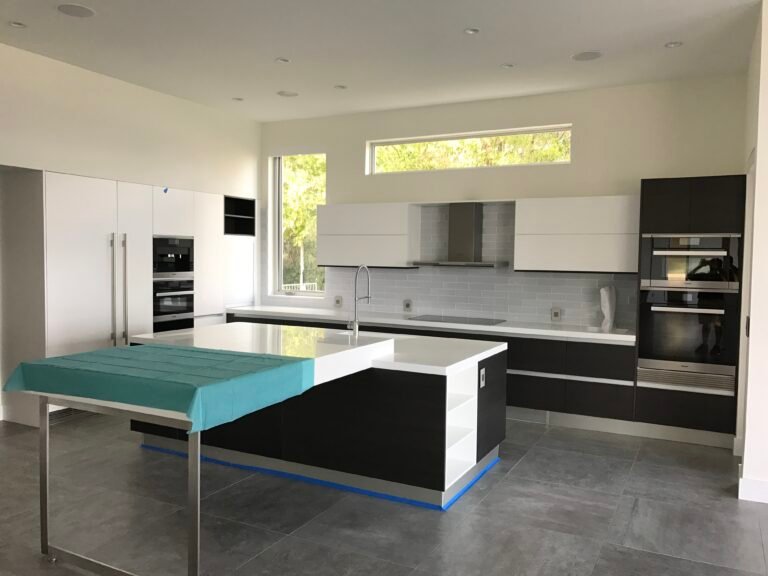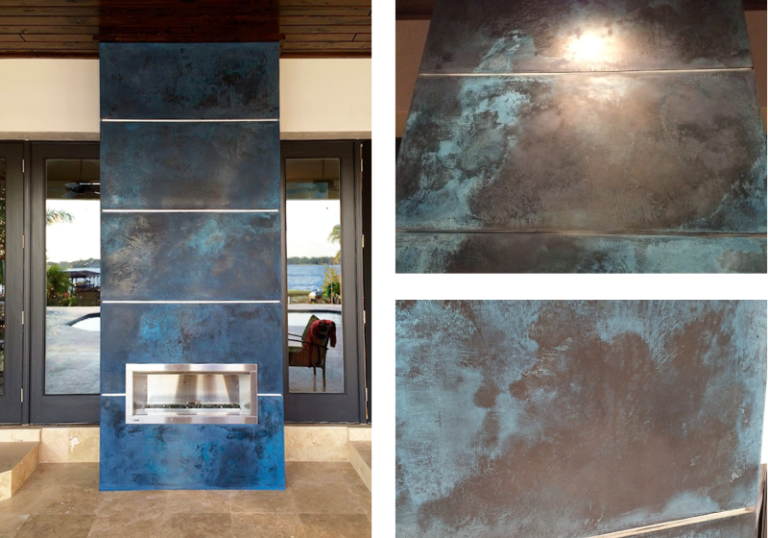Lime Paint vs Venetian Plaster: 10 Key Differences You Should Know
Are you trying to decide between lime paint vs Venetian plaster for your next project?
Maybe you’re browsing inspiration photos or chatting with your designer, and now you’re wondering: What’s the real difference between the two, and which one should I choose?
Both are beautiful, timeless finishes made from natural materials, but they each bring a unique look, feel, and performance to your walls. Choosing the right one depends on your style, space, and how you want to live with it every day.
And trust me, I understand how tough that decision can be, because, as Tera Smith from Smith Interior Design puts it, “few things hold as much power as the walls that surround us.” When you’re choosing between two finishes this beautiful, it’s easy to feel torn.
After years of working with both finishes, I still find myself pausing to admire the depth of Venetian plaster or the quiet softness of lime paint.
When you’re focused only on the aesthetic, it’s easy to feel torn, because they’re both stunning in their own way.
That’s why this guide exists: to give you more than just the visual appeal, so you can make a choice that also works for your space, lifestyle, and your budget.
Let’s dive in!
Lime Paint vs Venetian Plaster: Key Differences
In case you’re in a hurry, I’ve started with this quick side-by-side comparison to help you spot the key differences between lime paint and Venetian plaster.
It’s a great starting point if you’re trying to decide which one might be right for your space. For a deeper dive, keep reading. I’ll walk through everything in more detail.
| Feature | Lime Paint | Venetian Plaster |
|---|---|---|
| Main Ingredients | Lime dust, water, natural pigments | Lime putty, marble dust |
| Application Method | Brushed on | Troweled on by hand in multiple thin layers |
| Finish Appearance | Matte, soft tonal movement | Ranges from matte to high-gloss; can resemble stone or marble |
| Surface Feel | Chalky, textured | Smooth, cool, dense |
| Best For | Subtle, natural-looking walls in relaxed or rustic settings | Elegant focal points or high-end modern/traditional interiors |
| Durability | Good (can patina over time) | Very durable when properly applied and maintained |
| Breathability | Highly breathable | Also breathable; resists mold and mildew |
| Surface Compatibility | Requires porous or primed surfaces | Can be applied to drywall, plaster, or concrete |
| Cost (General Range) | Lower material and labor costs | Higher cost due to labor intensity and the skill required |
| Maintenance | May need touch-ups over time | Easy to clean; touch-ups can be blended depending on the finish |
What is Lime Paint?
Lime paint is a natural mineral-based paint made from lime dust (calcium hydroxide), water, and natural pigments. It’s been used for centuries, but today, it’s having a real design moment.
When applied, lime paint absorbs into the wall and slowly carbonates, bonding with the surface to create a soft, velvety texture with gentle color variations. The result? A matte, organic look that adds depth and quiet movement to any space.
Because it’s breathable, eco-friendly, and made from natural materials, it’s a favorite among designers and homeowners who want a timeless, relaxed finish that also promotes a healthier indoor environment.
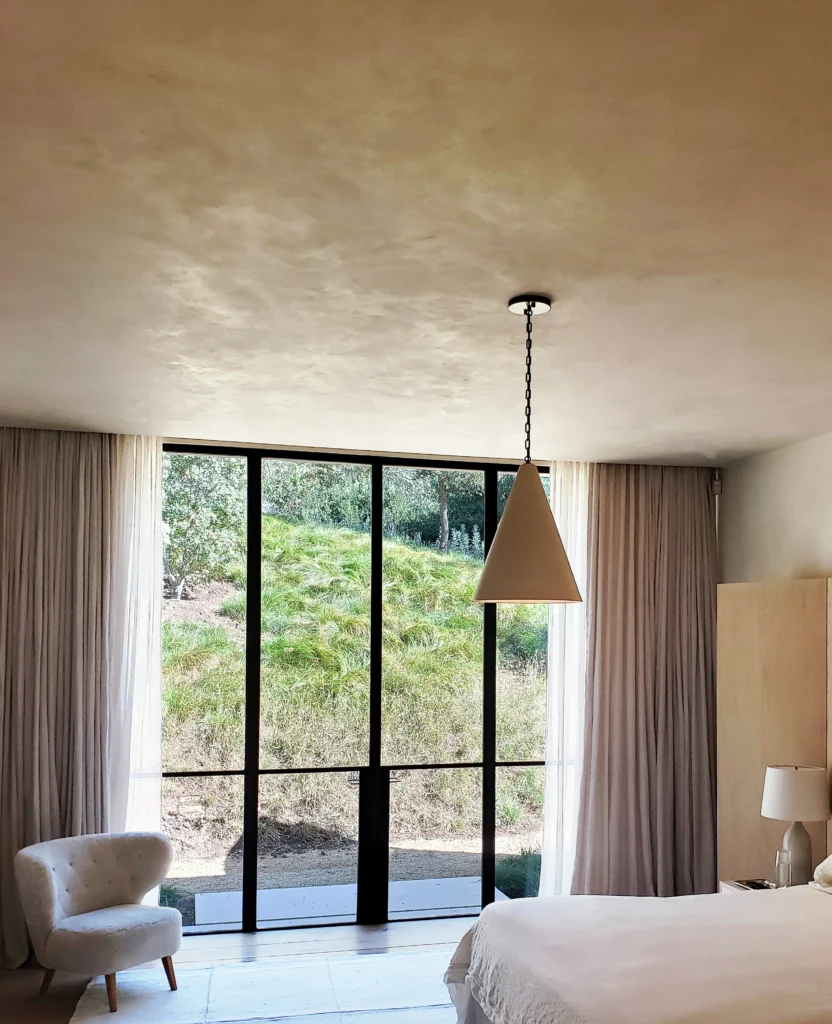
But! Beware not to confuse lime paint with limewash.
A common mistake is using the terms “limewash” and “lime paint” interchangeably. While they’re both lime-based, they’re not the same:
| Feature | Limewash | Lime Paint |
|---|---|---|
| Texture | Watery and translucent | Creamy and more opaque |
| Application | Soaks into porous surfaces only | Can go over more primed surfaces |
| Finish | Very matte and soft-washed | Slightly thicker, more color depth |
| Use | Often for rustic or historic looks | More versatile in modern design |
So, if someone says “limewash walls,” make sure they’re not actually referring to lime paint because the difference will show up in the final look and feel.
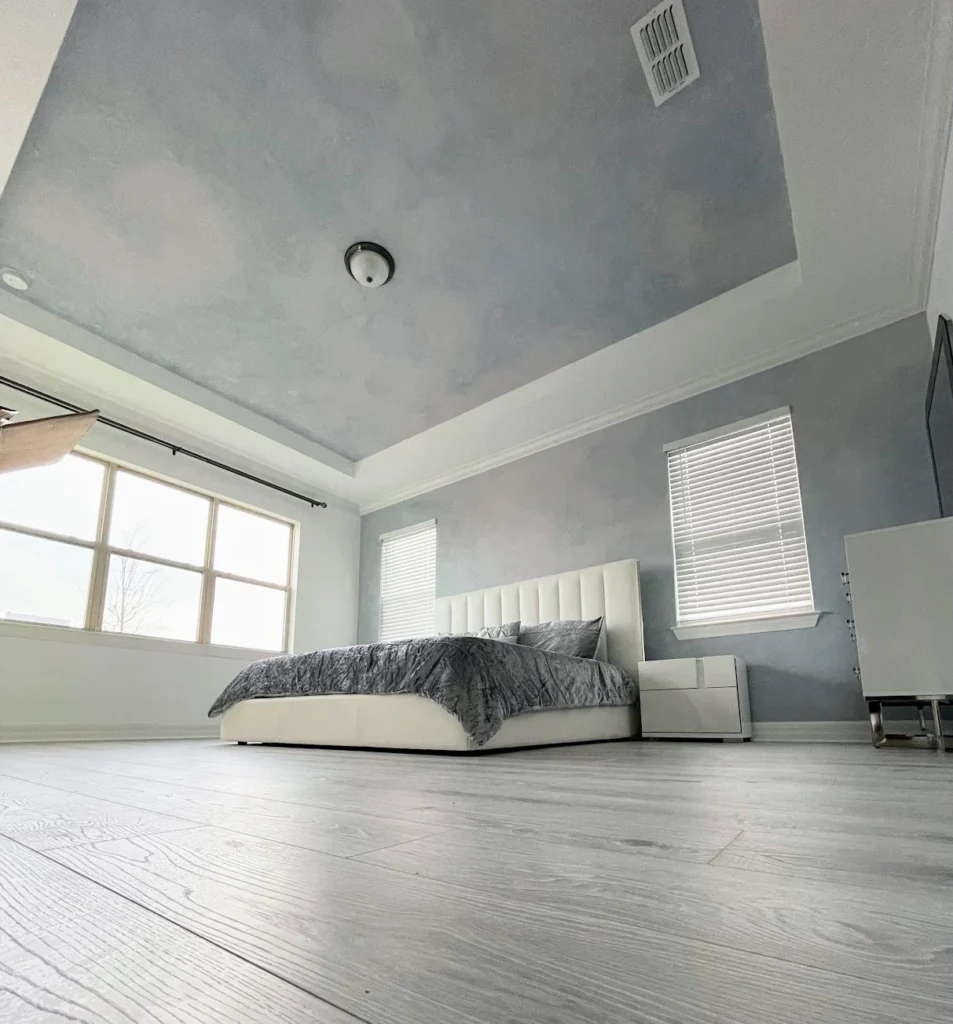
What Is Venetian Plaster?
Venetian plaster is a hand-applied wall finish made from lime dust and finely ground marble. When layered and polished correctly, it creates a smooth, natural surface that can range from a soft matte finish to a glossy, almost glass-like sheen.
It’s not paint, it’s a true plaster finish, and it behaves more like stone than a coating. In fact, when you run your hand across it, it often feels cool and dense, like you’re touching carved limestone.
Unlike lime paint, which soaks into the surface, Venetian plaster is built up in thin layers with a trowel. That process gives it depth, movement, and the kind of light reflection that brings a wall to life – subtle during the day, dramatic in evening light.
If you’re considering a feature wall, fireplace, or just want something that feels elevated and timeless, Venetian plaster is a finish worth exploring. And if your
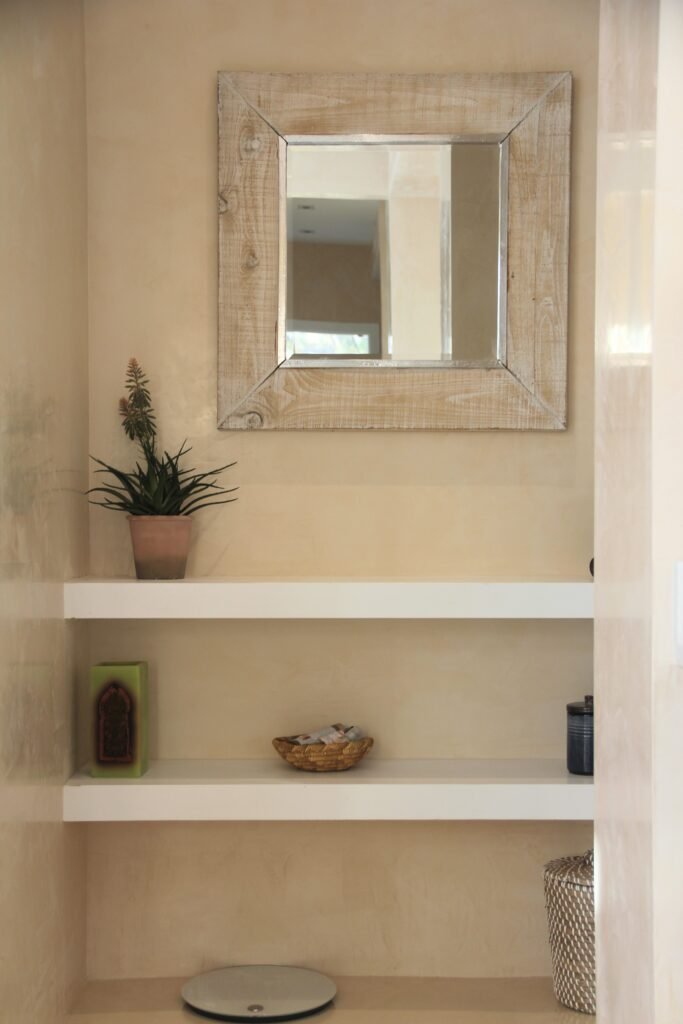
Key Characteristics:
- Made from: Lime putty + marble dust
- Application: Hand-applied in multiple layers with a trowel
- Finish options: Matte, satin, or high gloss
- Feel: Cool, smooth, stone-like
- Durability: Extremely long-lasting and easy to maintain
Among today’s plaster finishes, Venetian plaster stands out for its flexibility; it can be finished matte or polished, subtle or bold, depending on your vision.
It’s a strong choice for spaces that call for something custom and handcrafted.
That said, it’s not always the right fit for every project. Like any finish, it works best when it aligns with your design goals, your space, and your budget.

How to Choose the Right Finish for Your Space
So, lime paint or Venetian plaster, which one’s right for you?
It really comes down to your design goals, the function of the space, and how much you’re looking to invest.
Here’s how to narrow it down:
1. What Look Are You Going For?
- Go with Lime Paint if…
You want a soft, natural, lived-in look with beautiful tonal variation and texture. It’s great for calm, earthy interiors and pairs well with raw materials like wood and stone. - Choose Venetian Plaster if…
You’re after something more refined, smooth, and sculptural. It’s ideal when you want a luxurious surface that adds depth and subtle drama, perfect for feature walls, fireplaces, or formal rooms.
2. What Room Are You Finishing?
- Lime Paint works well in:
Bedrooms, living rooms, home offices, spaces where softness, breathability, and an organic vibe matter. - Venetian Plaster shines in:
Entryways, dining rooms, bathrooms, or anywhere you want a standout surface that makes a statement and handles traffic or moisture with grace.
3. What’s Your Budget?
- Lime paint is typically more budget-friendly due to its simpler application process. It still delivers character and charm, but with a lighter investment.
- Venetian plaster requires more time, skill, and labor, so it’s priced accordingly. But if you’re planning to stay in your home long-term or want to boost resale value, it can be a smart investment.
4. How Much Maintenance Are You Okay With?
- Lime paint is breathable but may mark or patina over time, which some love, but it can require occasional touch-ups.
- Venetian plaster is smooth, dense, and easy to clean. Minor blemishes often blend back in with a simple polish or patch.
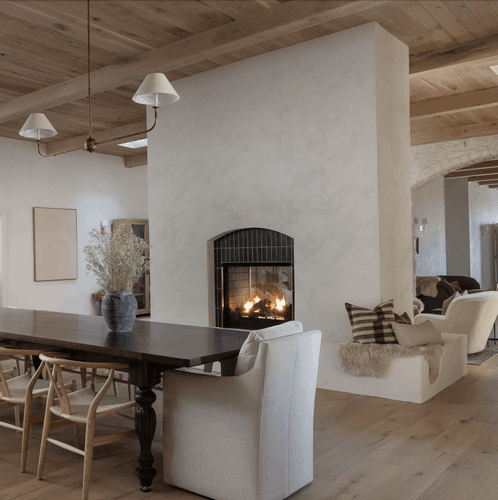
Final Thoughts
No matter which direction you’re leaning, the key is choosing the right wall finish that suits both your lifestyle and your vision.
When it comes to lime paint vs Venetian plaster, there’s no one-size-fits-all answer; it’s just the right choice for your style, space, and goals.
If you love the soft, matte look of natural mineral walls with subtle color variations and a relaxed feel, lime paint could be the perfect fit. If you’re after something with a bit more polish, depth, and elegance, Venetian plaster might be exactly what your space needs.
Both finishes offer timeless beauty, breathability, and a connection to traditional craftsmanship, but they each bring something unique to the table.
If you’re in Clermont, FL or surrounding areas, and still unsure which way to go, we’re here to help. At Artesano Craftsmen, we offer personalized consultations, custom samples, and expert guidance to help you confidently bring your design vision to life.
Want to see the difference in person?
Let’s talk. Your walls are ready for something exceptional.
FAQ
Is lime paint the same as limewash?
No, though they’re often confused, lime paint and limewash are different.
Limewash is thinner, more translucent, and works best on raw masonry or very porous surfaces. Lime paint has more body, gives better coverage, and can be applied over more interior-friendly surfaces when properly primed. They’re both mineral-based and beautiful, but knowing the difference helps you choose the right one for your space.
What makes Venetian plaster different from regular plaster finishes?
Venetian plaster is made from lime putty and marble dust, giving it a smoother, denser, and more refined finish compared to standard gypsum or cement-based plasters. It can be polished to a high gloss or left matte, and its layered application creates depth and movement not found in basic wall finishes.
Which is more durable: lime paint or Venetian plaster?
Both are long-lasting when properly applied, but Venetian plaster tends to be more durable, especially in high-traffic areas or bathrooms. It resists moisture and can be easily cleaned or polished. Lime paint is more delicate and may develop patina or markings over time, which some homeowners actually prefer for its natural look.
Can I use lime paint or Venetian plaster in humid areas like bathrooms?
Yes, but with some considerations. Venetian plaster, especially when burnished or sealed, performs well in humid environments and is often used in bathrooms. Lime paint is breathable and mold-resistant, but it’s best used in areas without direct water exposure unless properly sealed.
